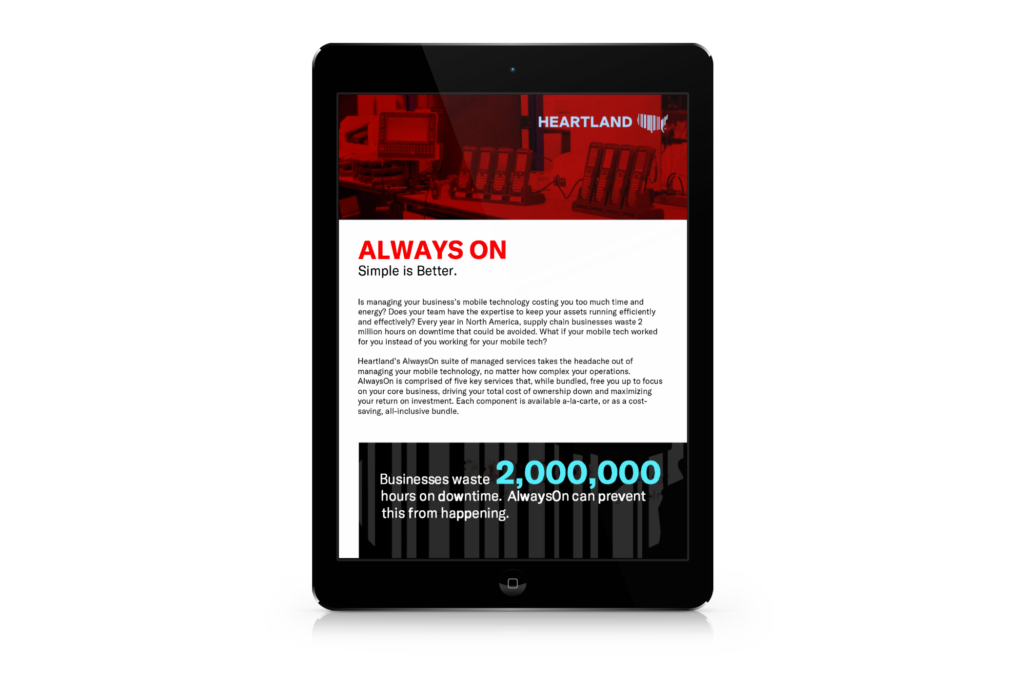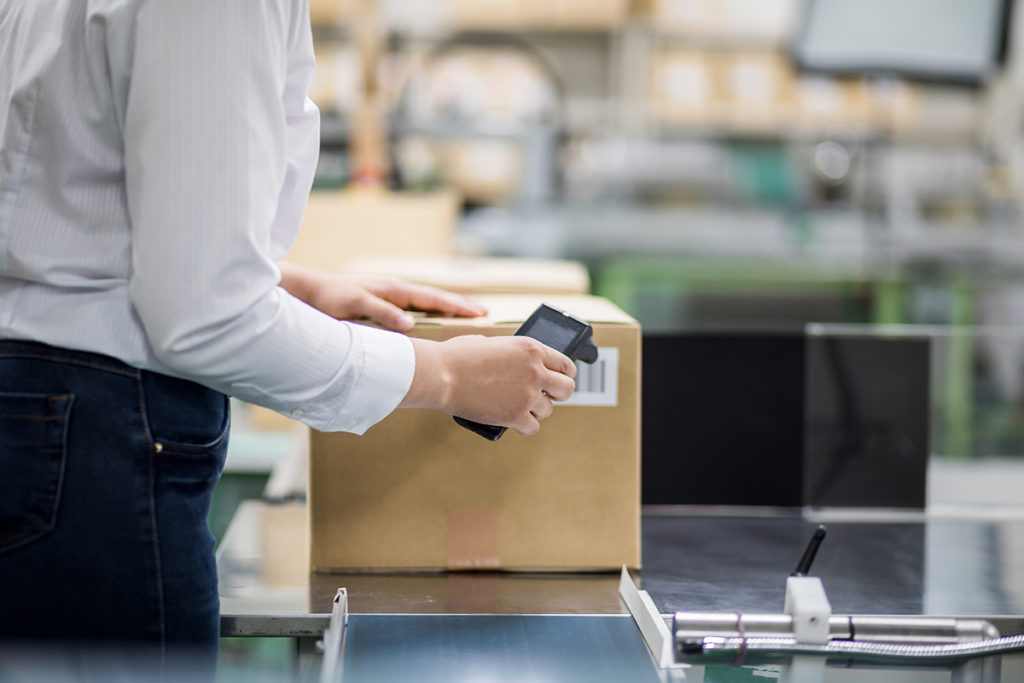HEARTLAND
Enterprise Mobility Management (EMM)
Software
SOTI MobiControl
SOTI MobiControl is a leading EMM solution.

Honeywell Workflow Solutions
Honeywell workforce and task management software solutions provide advanced data collection and analytics capabilities, enabling you to maximize your mobile workforce’s productivity while ensuring process compliance.

Zebra Intelligent Edge Solutions
Intelligently connect your company’s assets, data and people in collaborative workflows. Sense what’s happening, analyze or anticipate the implication, and make best-action decisions in real time.
INDUSTRY STATISTIC
75% of Returns Don't Have Defects
Reverse Logistics Association Don’t waste hidden value in your supply chain
HEARTLAND
Services
AlwaysOn

Repair Management

Spare Pool Management

Mobile Device Management Support

Integrated Helpdesk

Configure to Purpose
AlwaysConnected

Network Design & Engineering

Network Diagnostics

Structured Cabling and Installation

Network Monitoring

Post Installation Validation

Site Survey
LEARN MORE
AlwaysOn Data Sheet
Get our data sheet on how AlwaysOn suite of services can help your business.

EVERYTHING YOU WANT TO KNOW
Frequently Asked Questions
How much do returns cost retailers?
The National Retail Federation found for every one billion dollars in sales, the average retailer incurs $106 million in merchandise returns. Additionally, for every $100 in returned merchandise accepted, retailers lose $5.90 to return fraud. Returns rates to stores are around 8%, this jumps to around 25% for items bought online, according to Paazl.
What do retailers do with returned items?
Retailers look to salvage whatever they can on return merchandise. When possible retailers will chargeback the vendor for the return. When the return can't be charged back to the vendor, retailers look to sell it as quickly as possible so it doesn’t take up warehouse and store space. The biggest retailers sell merchandise returns to direct liquidators who then resell them. Some products are sold "as new", while others will be marked as "tested not working" or "unrepairable."
How to buy returned merchandise?
To buy return merchandise by the box load, pallet, or truckload from a Direct Liquidator, create an account, browse the list of categories, and search for individual manufacturers or products.
Where does returned merchandise go?
Returned merchandise goes to the original vendor or to direct liquidators after it is received by retailers.
What is a merchandise return card?
A Merchandise Return Card is a payment card that the customer can use for a future transaction with the retailer. Merchandise Return Cards are given to customers for approved non-receipted returns. Also, a Merchandise Return Card is given to customers if any portion of their sales transaction was purchased with a Merchandise Return Card.
20 MINUTES CAN CHANGE YOUR BUSINESS
Talk to a Heartland expert about your AlwaysOn business needs.
Fill out the form and a Heartland expert will contact you to schedule a free 20 minute evaluation of challenges, goals and gaps in your mobile technology deployment.


